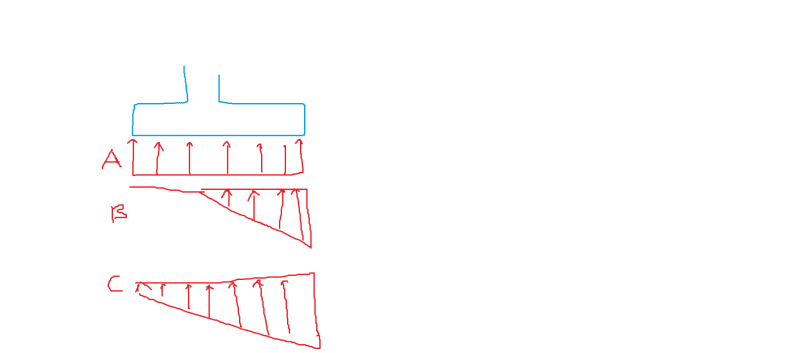Hello everyone,
I am a civil engineer with some years of experience, but I find myself facing some challenges in developing a spreadsheet for foundations. I would like to ask the opinion of more experienced colleagues, as I know these topics are not always straightforward and any help would be invaluable.
I have two specific questions that have me a bit stuck:
1. *Why is it important that the max ratio between the maximum stress and minimum stress in a foundation be less than 1.25?* I have read that this is crucial, but I don't quite understand the logic behind this criterion.
2. *Regarding shear in a foundation, is it possible that it is absorbed by the beams or slabs rather than the foundations?* I have been told that shear in foundations (and therefore the moment it generates) is often neglected when there are beams or slabs that absorb the shear. If so, wouldn't it be more sensible to take only a fraction of the shear with the foundations?
I hope you can help me with this point, as I am not sure if it is the most adequate from a structural point of view.
I understand that these questions may seem basic to some, but I would really appreciate any explanations or references you can offer me. I am trying to learn and improve in these aspects, and your experience would be of great help.
Thank you very much for taking the time to read and respond.
Best regards
I am a civil engineer with some years of experience, but I find myself facing some challenges in developing a spreadsheet for foundations. I would like to ask the opinion of more experienced colleagues, as I know these topics are not always straightforward and any help would be invaluable.
I have two specific questions that have me a bit stuck:
1. *Why is it important that the max ratio between the maximum stress and minimum stress in a foundation be less than 1.25?* I have read that this is crucial, but I don't quite understand the logic behind this criterion.
2. *Regarding shear in a foundation, is it possible that it is absorbed by the beams or slabs rather than the foundations?* I have been told that shear in foundations (and therefore the moment it generates) is often neglected when there are beams or slabs that absorb the shear. If so, wouldn't it be more sensible to take only a fraction of the shear with the foundations?
I hope you can help me with this point, as I am not sure if it is the most adequate from a structural point of view.
I understand that these questions may seem basic to some, but I would really appreciate any explanations or references you can offer me. I am trying to learn and improve in these aspects, and your experience would be of great help.
Thank you very much for taking the time to read and respond.
Best regards

